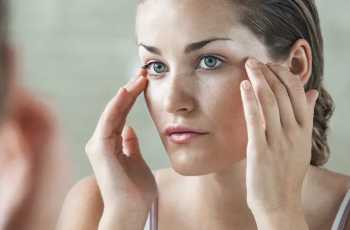
What Is Multimasking? A Complete Guide to This Customizable Skincare Technique
If you’re passionate about skincare or simply trying to improve your complexion, you’ve likely come across a buzzword that’s been floating around beauty blogs and skincare forums alike: multimasking. This technique isn’t just another passing trend—it’s a smart and tailored approach to facial masking that addresses the specific needs of different areas of your face all at once.
Multimasking allows you to treat oily T-zones, dry cheeks, congested pores, and dull skin in a single skincare session by applying different types of masks to different parts of your face. Think of it as a custom facial, but at home. Below, we’ll walk you through everything you need to know about this technique—from prepping your skin to choosing the right masks and making sure your skin reaps all the benefits.
What Exactly Is Multimasking?
Multimasking involves using multiple face masks simultaneously on different zones of your face, depending on each area’s unique needs. Instead of applying one mask all over, you apply targeted formulas where they’re most beneficial. For example:
A clay mask on your oily T-zone (forehead, nose, chin)
A hydrating cream mask on your dry cheeks
A brightening mask around dull areas or hyperpigmentation
This targeted approach helps you get maximum benefit from each formula while avoiding unnecessary irritation or over-treatment in areas that don’t need it.
Step-by-Step Guide to Multimasking
1. Start With a Clean Slate
Before you even open a mask packet, make sure your skin is thoroughly cleansed. A gentle cleanser removes surface oils, dirt, and makeup, allowing your skin to better absorb the active ingredients in your masks. For even better results, follow with a mild exfoliator to slough away dead skin cells.
A product like Procoal’s Exfoliating Face Scrub, with charcoal beads and light pumice, is ideal for prepping your skin—especially if you’re looking to unclog pores and detoxify the surface before masking.
2. Analyze Your Skin
Look closely at your face and ask yourself:
Is my T-zone shiny or congested?
Are my cheeks dry or flaky?
Do I have redness, acne, or dark spots in certain areas?
Tailoring your masks based on these questions is what makes multimasking so effective. You don’t have to use an entire jar—just dab a small amount in the areas that need it.
3. Choose Your Masks Wisely
Each part of your face may require a different type of care. Here’s a quick guide:
Skin Concern Recommended Mask Type
Oily/Acne-Prone Areas Clay, charcoal, or sulfur masks
Dry Areas Cream, gel, or hyaluronic acid-based masks
Dull Skin Brightening masks with vitamin C or niacinamide
Redness/Sensitivity Soothing masks with aloe vera, chamomile, or calendula
Mix and match based on your skin’s needs.
Pro Tips for Multimasking Like a Pro
4. Apply Strategically
Use a flat brush or clean fingers to apply each mask in the correct zone. Don’t worry about neat lines—just be intentional about placement.
5. Shower First (Optional but Effective)
A warm shower before applying your masks can help open pores, allowing active ingredients to penetrate more effectively. The steam creates an ideal environment for maximum absorption.
6. Don’t Be Afraid to Use Sheet Masks
Multimasking doesn’t have to be limited to traditional cream or clay masks. Sheet masks can also be snipped into smaller pieces and applied to targeted zones. For example, Procoal’s Marine Moisture Sheet Mask is great for dry cheeks and forehead. Just cut what you need and keep the rest chilled in the fridge—it can last for several days.
7. Layering Is Allowed
Masks don’t have to be used all at once. You can start with a detox mask, remove it, and follow up with a hydrating sleep mask. This sequence ensures deep cleansing followed by replenishment—ideal for combination or breakout-prone skin.
8. Time It Right
Not all masks have the same application time. Clay masks might need 10–15 minutes to dry, while hydrating masks can sit longer. Apply masks with longer durations first, then add quicker-setting ones later. This way, you can rinse everything off at the same time.
Aftercare: The Often-Overlooked Final Step
Once you’ve rinsed off your masks, resist the urge to just walk away. This is the perfect time to lock in hydration and nutrients.
Apply a serum suited to your overall skin goal (hydration, brightening, anti-aging, etc.)
Follow with a moisturizer to seal everything in
If it’s daytime, finish with sunscreen—even after indoor masking!
How Often Should You Multimask?
Multimasking is incredibly effective, but don’t overdo it. Two to three times a week is enough for most skin types. Overmasking can disrupt your skin barrier and cause more harm than good. The key is consistency and moderation.
Cost-Saving Tips for Multimasking
It’s true—using multiple products can get expensive. To keep costs manageable:
Use sample sizes or travel kits
Stick to trusted products you know work well with your skin
Avoid overapplying—you only need a thin layer on each targeted area
Also, remember you don’t have to use five masks at once. Even two masks used strategically can be just as effective.
Why Multimasking Is Worth It
Multimasking isn’t just a trendy ritual—it’s one of the most efficient ways to address multiple skin issues in a single session. Whether you’re dealing with breakouts, dryness, or dullness, this customizable method ensures your skin gets the care it needs, exactly where it needs it.
Plus, it turns skincare into a spa-like experience, making your self-care routine more enjoyable and personalized.
In Summary: Multimasking 101
Cleanse and exfoliate your face before masking
Assess your skin’s specific needs by zone
Choose masks tailored to each area (clay for oily, cream for dry, etc.)
Apply strategically, and layer or time if needed
Always follow up with a serum and moisturizer
Don’t overdo it—2–3 times a week is ideal
Multimasking might take a little extra effort, but once you see how well it works, it’ll quickly become your favorite part of the week.
Would you like a custom multimasking routine based on your skin type?

